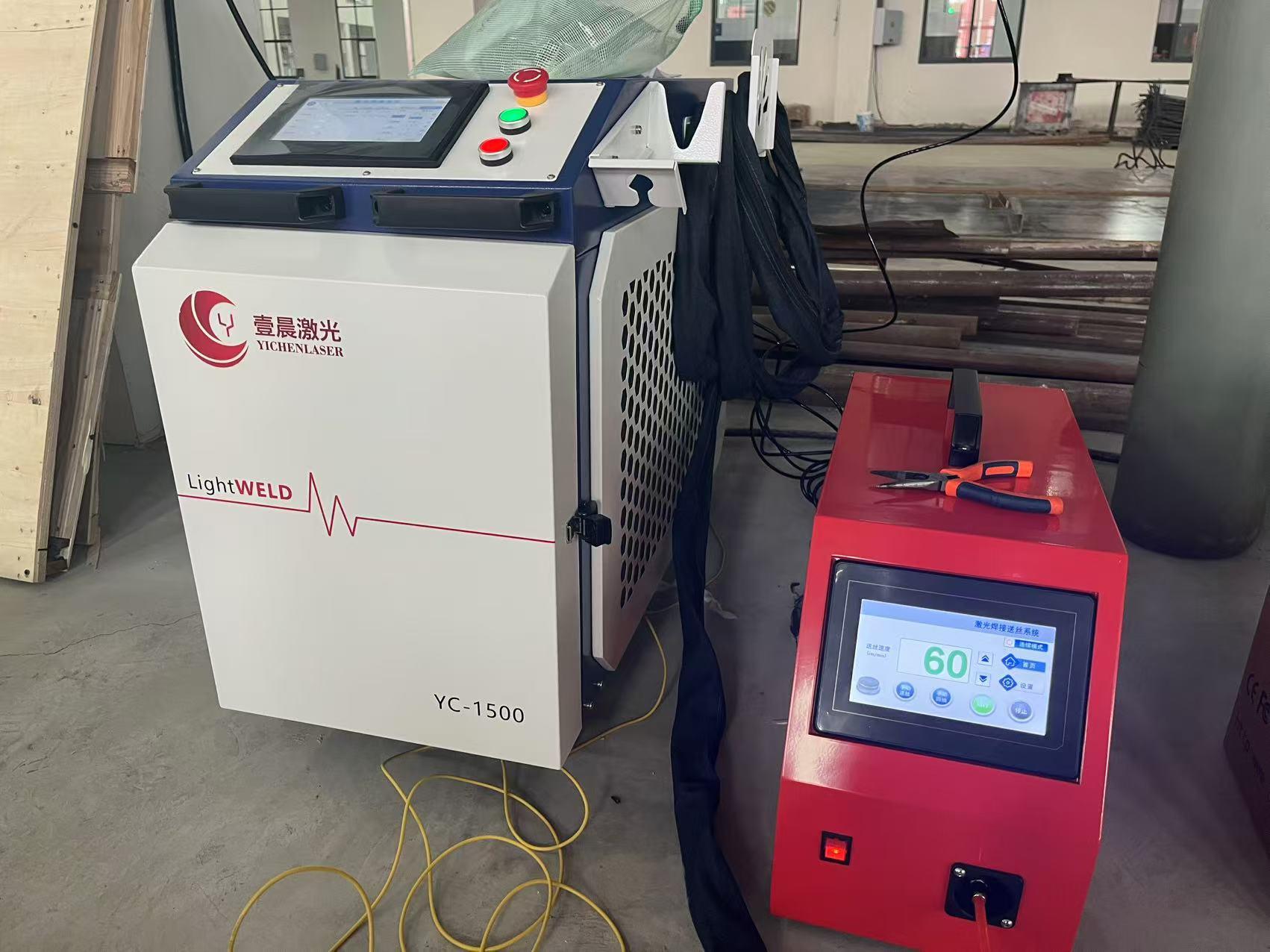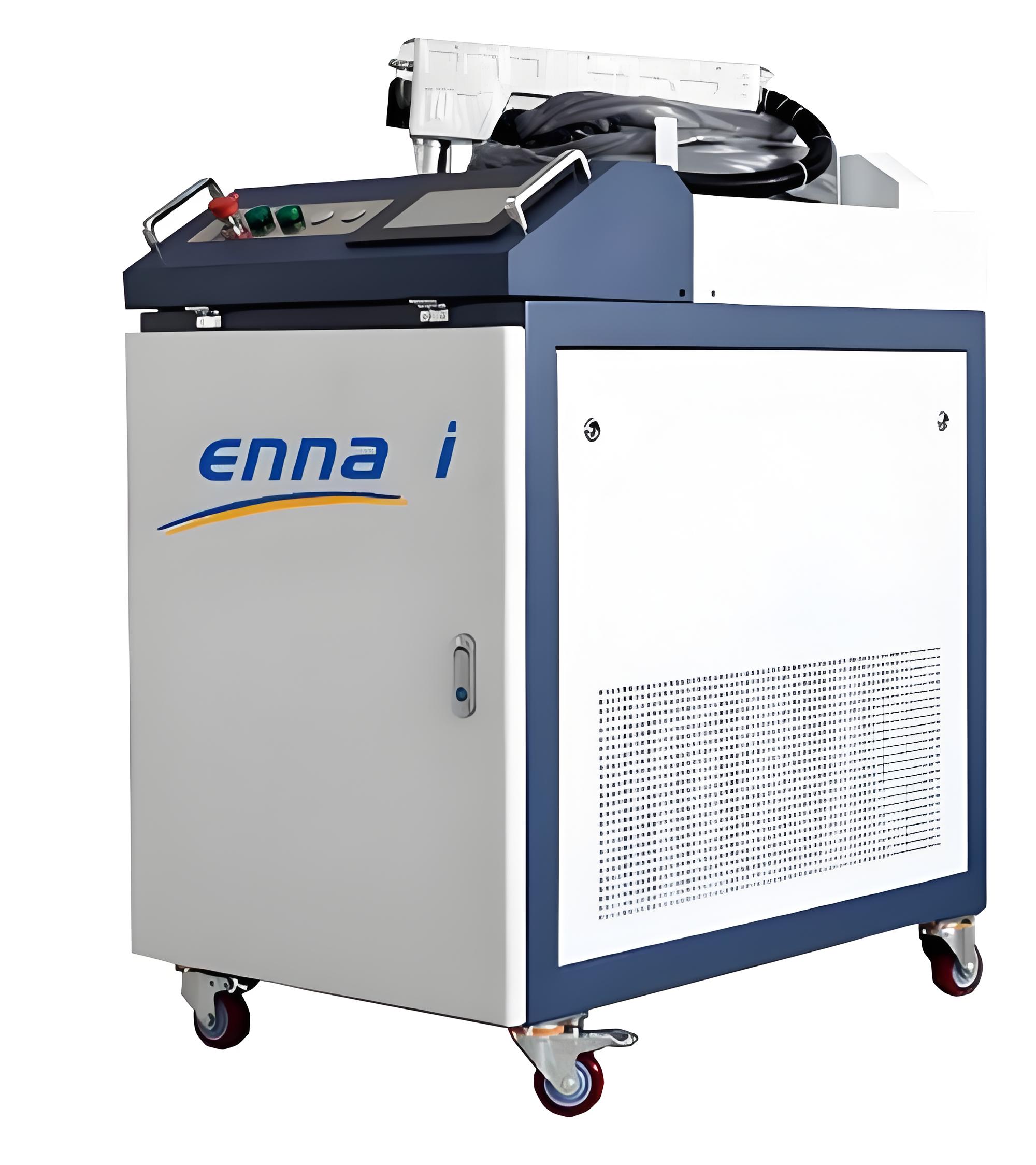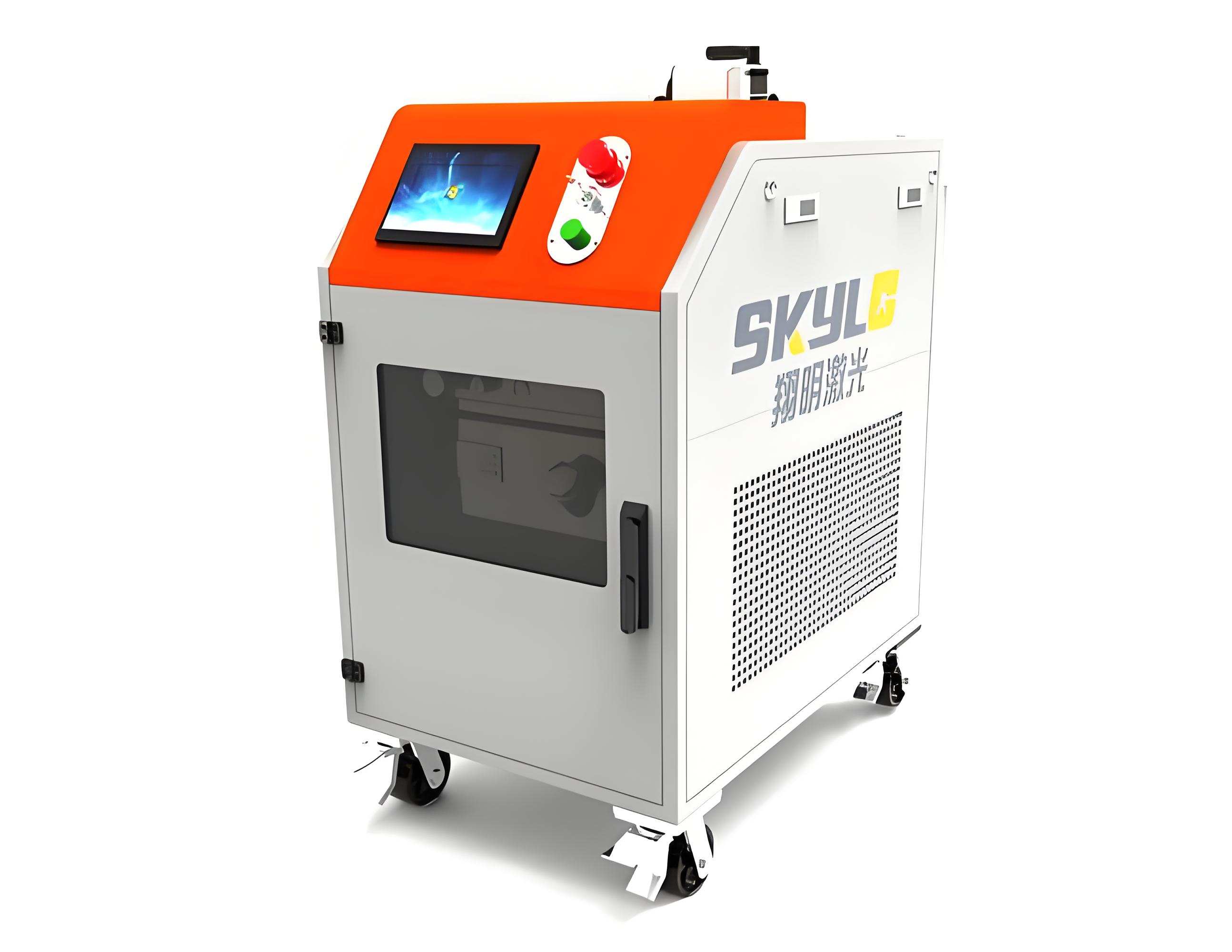Having spent years in the metal surface treatment industry, I’ve worked with countless tools and techniques to battle rust, from gritty sandblasting to high-tech solutions. Among them, laser rust removal machines have become a standout for their precision and eco-friendly approach. But whenever I mention lasers to clients, one question inevitably pops up: “How much does one of these machines actually cost?” It’s a fair question—investing in new technology can feel daunting, especially when budgets are tight. Drawing from my experience helping businesses and individuals choose equipment, I’ll break down the cost of laser rust removal machines, what influences the price, and whether they’re worth it for your needs. My goal is to give you a clear, practical picture so you can make an informed decision.

Why the Cost Question Matters
Rust removal is a critical task in industries like manufacturing, automotive restoration, and marine maintenance, but the tools you choose can make or break your budget. Laser rust removal promises efficiency, precision, and environmental benefits, but its reputation as a high-tech solution often leads people to assume it’s prohibitively expensive. Understanding the cost—and what you’re paying for—helps you weigh it against traditional methods like sandblasting or chemical cleaning. In this article, I’ll unpack the price range, factors affecting cost, and long-term value, using real-world examples from projects I’ve worked on.
The Cost Range of Laser Rust Removal Machines
Let’s get straight to the numbers. Based on my experience sourcing equipment for clients and researching the market as of June 2025, the cost of a laser rust removal machine typically ranges from $10,000 to $150,000 USD, depending on several factors like power, type, and features. Here’s a quick breakdown of the price spectrum:
Entry-Level Machines (100-300W): $10,000–$30,000
These are compact, often handheld units suited for small-scale or precision tasks, like cleaning rust from automotive parts or artifacts. I’ve seen small workshops use these for occasional jobs, such as restoring vintage car panels.
Mid-Range Machines (500-1000W): $30,000–$80,000
These are versatile systems for industrial applications, capable of handling moderate to heavy rust on larger surfaces like pipelines or ship hulls. I helped a factory invest in a 500W machine for regular equipment maintenance, and it paid off quickly.
High-End Machines (1000W+ or Automated Systems): $80,000–$150,000+
These are powerful, often automated systems designed for large-scale or continuous use in industries like marine or infrastructure. A shipyard I worked with used a 1500W automated laser to clean massive hulls, slashing maintenance time.
These ranges are approximate and vary based on configuration, region, and supplier. For precise pricing, I always recommend contacting manufacturers or distributors directly, as I don’t have access to specific pricing details for subscriptions or services.

Factors Influencing the Cost
The price of a laser rust removal machine isn’t a simple number—it depends on several variables. Here’s what I’ve learned from helping clients navigate these factors:
1. Laser Power (Wattage)
The power output (measured in watts) is the biggest driver of cost. Higher wattage means faster cleaning and the ability to tackle thicker rust or larger surfaces, but it comes with a higher price tag.
Low-Power (100-300W): Affordable for small jobs, like cleaning rust from delicate parts or artifacts. I used a 200W laser to clean a museum’s antique sword, and it was perfect for the task.
Mid-Power (500-1000W): Balances speed and versatility for industrial use. A 500W machine I recommended to a factory handled everything from steel rollers to coated pipes.
High-Power (1000W+): Designed for heavy rust or large areas, like ship hulls. These are pricier but essential for high-volume industries.
Example: A client in automotive restoration chose a 300W machine for $20,000, which was sufficient for car chassis cleaning. A marine client needed a 1500W system for $100,000 to handle ship decks efficiently.
2. Laser Type
The type of laser—pulsed or continuous-wave—affects both performance and cost:
Pulsed Lasers: Deliver energy in short bursts, ideal for precision tasks with minimal heat buildup. They’re more expensive due to their advanced technology. I’ve used pulsed lasers for aerospace parts where heat sensitivity was a concern.
Continuous-Wave Lasers: Provide a steady beam, better for heavy rust but less precise. They’re generally cheaper. A factory I worked with saved money by choosing a continuous-wave laser for robust steel structures.
Pulsed lasers can cost 20-30% more than continuous-wave models of the same power, but their precision often justifies the price for high-stakes applications.
3. Portability and Design
Handheld machines are typically cheaper and suited for small or mobile tasks, while automated or stationary systems with robotic arms or conveyor integration cost more due to their complexity. I helped a small workshop pick a $15,000 handheld unit for flexibility, while a large factory invested $90,000 in an automated system to streamline production line cleaning.
4. Cooling System
Lasers generate heat, so cooling systems are critical, especially for high-power or continuous use. Air-cooled machines are cheaper but limited to lower power (100-500W). Water-cooled systems, necessary for 1000W+ machines, add to the cost. A shipyard I advised opted for a water-cooled 1500W laser, which increased the price but ensured reliability during long sessions.
5. Additional Features
Modern machines often include extras that drive up costs:
AI Integration: Systems with AI to detect rust and adjust settings automatically are pricier but save time. I tested an AI-equipped laser that cut cleaning time by 20%.
Suction Systems: Built-in dust/vapor collection adds $2,000–$5,000 but keeps workspaces clean.
Customization: Specialized optics or scanning heads for complex geometries can add $5,000–$20,000.
In one project, a client paid extra for a suction system, which was a lifesaver in their dust-sensitive factory environment.

6. After-Sales Support and Warranty
Machines with comprehensive warranties or robust technical support cost more upfront but save money long-term. I’ve seen clients regret buying cheaper units with poor support, as repairs ate into their savings. A reliable warranty can add $1,000–$10,000 to the price but is worth it for frequent users.
Cost Comparison: Laser vs. Traditional Methods
To put laser rust removal machine costs in perspective, let’s compare them to traditional methods like sandblasting, chemical cleaning, and grinding. Here’s a table based on my experience:
| Method | Initial Cost | Ongoing Costs | Key Considerations |
|---|---|---|---|
| Laser Rust Removal | $10,000–$150,000 | Low (electricity, maintenance) | High upfront cost, minimal consumables |
| Sandblasting | $5,000–$50,000 | High (abrasives, disposal, labor) | Lower initial cost, messy and labor-intensive |
| Chemical Cleaning | $1,000–$10,000 | High (chemicals, waste disposal) | Cheap equipment, environmental concerns |
| Mechanical Grinding | $500–$5,000 | Moderate (tools, labor, repairs) | Low cost, risks surface damage |
Laser Rust Removal: The high initial cost is offset by low ongoing expenses—no consumables like abrasives or chemicals, and minimal maintenance. A factory I worked with recouped their $50,000 laser investment in a year due to reduced labor and waste costs.
Sandblasting: Equipment is cheaper, but abrasives (e.g., sand, glass beads) and waste disposal add up. A shipyard I advised spent $10,000 annually on sandblasting media alone.
Chemical Cleaning: Low equipment costs, but chemicals and disposal are expensive and regulated. A client’s chemical cleaning job cost $5,000 in materials for a single project.
Grinding: The cheapest upfront, but labor-intensive and prone to surface damage, leading to repair costs. I’ve seen grinding jobs require $2,000 in refinishing due to scratches.
Verdict: Lasers are pricier initially but often more cost-effective long-term, especially for frequent or high-value applications.
Is a Laser Rust Removal Machine Worth the Cost?
The real question isn’t just “How much?” but “Is it worth it?” From my experience, the answer depends on your use case:
High-Volume Users: Industries like marine, manufacturing, or infrastructure benefit most. A shipyard I worked with justified a $100,000 laser by cutting maintenance time by 60% and eliminating waste disposal costs.
Precision Needs: For aerospace or heritage conservation, where surface damage is unacceptable, lasers are worth every penny. I helped a museum justify a $25,000 machine to preserve priceless artifacts.
Small-Scale or Infrequent Use: For small workshops or one-off projects, the cost may not make sense. A contractor I advised stuck with grinding for occasional jobs, as a $15,000 laser wasn’t viable.
To assess value, consider:
Frequency of Use: Daily or weekly use justifies the investment.
Environmental Regulations: Lasers avoid chemical or abrasive waste, saving on compliance costs.
Labor Savings: Lasers reduce cleaning time, lowering labor expenses.
Material Value: For high-value items (e.g., vintage cars, artifacts), lasers protect surfaces, avoiding costly repairs.

Real-World Cost Examples
Here are two projects I’ve worked on to show how costs play out:
Automotive Restoration: A client restoring classic cars bought a 300W handheld laser for $22,000. It paid off by saving 50% on labor compared to grinding and preserved the cars’ value. The machine handled rust and paint in one pass, unlike chemical methods that required multiple steps.
Industrial Maintenance: A factory invested $60,000 in a 1000W laser for pipeline cleaning. It reduced downtime by 70% and eliminated $8,000 in annual chemical disposal costs, breaking even in 18 months.
These examples show that while the upfront cost is high, the long-term savings can be significant.
Tips for Managing Costs
Based on helping clients navigate purchases, here are ways to make laser rust removal machines more affordable:
Start Small: If you’re new to lasers, a 100-300W handheld unit is cost-effective for small jobs. I recommended this to a small workshop, and it met their needs without breaking the bank.
Lease or Rent: Some suppliers offer leasing options, reducing upfront costs. A client leased a $40,000 machine for $1,000/month, making it manageable.
Compare Suppliers: Prices vary widely. Get quotes from multiple distributors to find the best deal.
Consider Used Equipment: Refurbished machines can save 20-40%. I helped a contractor buy a used 500W laser for $25,000, half the original price.
Factor in Savings: Calculate long-term savings on labor, consumables, and waste disposal to justify the investment.

The Future of Laser Rust Removal Costs
As of June 2025, laser technology is becoming more accessible. AI-integrated systems reduce operator training costs by automating settings, and economies of scale are driving prices down. I’ve seen entry-level machines drop 10-15% in price over the past few years. Ultrafast lasers (e.g., femtosecond) are still expensive but are entering niche markets like aerospace, potentially lowering costs as adoption grows.
Conclusion: Balancing Cost and Value
From my years in the field, I can say that laser rust removal machines are a significant investment, with prices ranging from $10,000 to $150,000 depending on power, type, and features. While the upfront cost is higher than traditional methods, the long-term savings—on labor, consumables, and environmental compliance—make them a smart choice for industries with frequent or high-stakes rust removal needs. For small-scale users, the cost may be harder to justify, but leasing or used equipment can bridge the gap.
If you’re weighing whether a laser rust removal machine fits your budget or project, I’m happy to share more insights from my experience. Just let me know your specific needs, and I’ll help you crunch the numbers!

Related Q&A
1. Are there cheaper alternatives to laser rust removal machines?
Yes, grinding ($500–$5,000) or chemical cleaning ($1,000–$10,000) are cheaper upfront, but they have higher ongoing costs and risks of surface damage.
2. Can I rent a laser rust removal machine instead of buying one?
Many suppliers offer rental or leasing options, which can cost $500–$2,000/month depending on the machine. This is great for short-term projects.
3. How long does it take to recoup the cost of a laser machine?
For frequent users, savings on labor and consumables can recover the cost in 1-2 years. A factory I worked with broke even in 18 months with a $60,000 machine.
4. Do laser rust removal machines have high maintenance costs?
No, maintenance is minimal—mostly cleaning optics and checking cooling systems. Annual costs are typically $1,000–$3,000, far less than sandblasting media.
5. How do I find the best price for a laser rust removal machine?
Compare quotes from multiple suppliers, consider refurbished units, and factor in long-term savings. Always check warranty and support options to avoid hidden costs.






